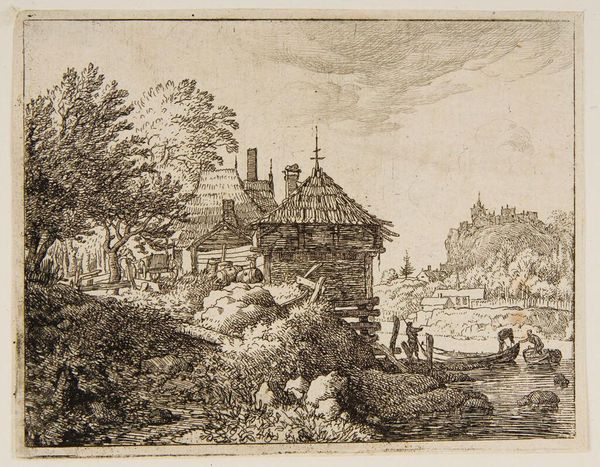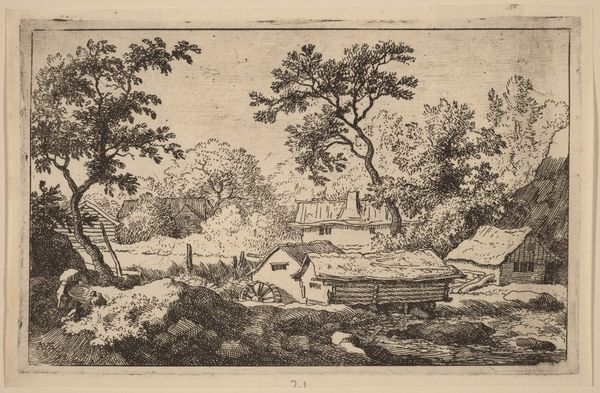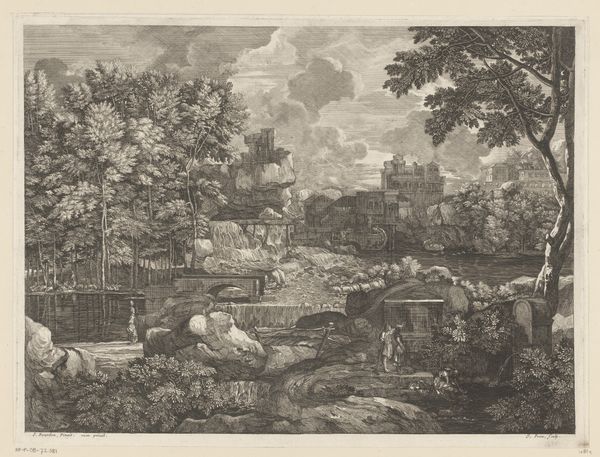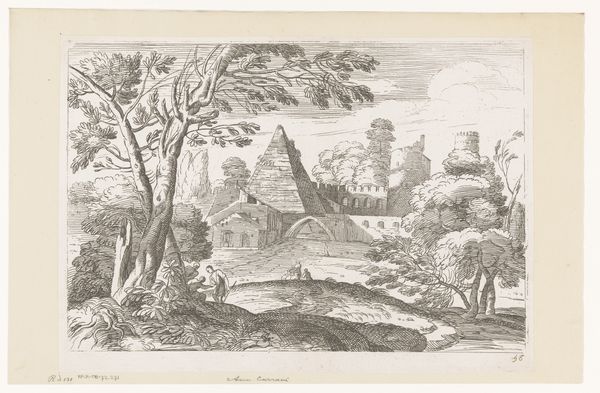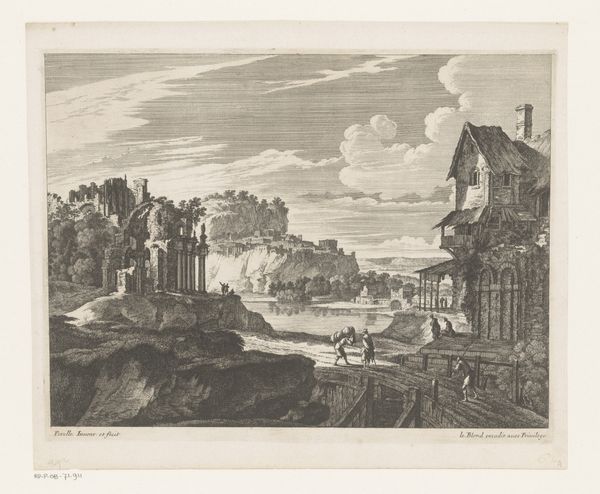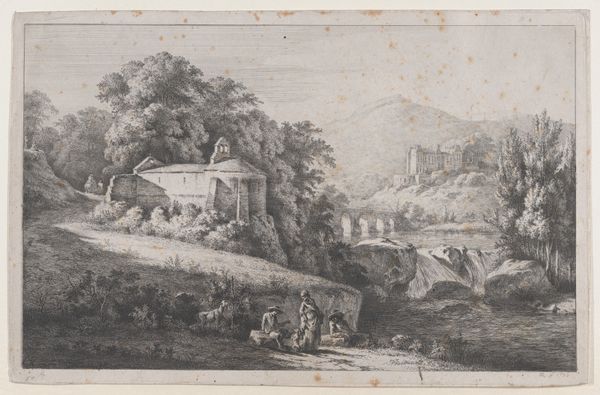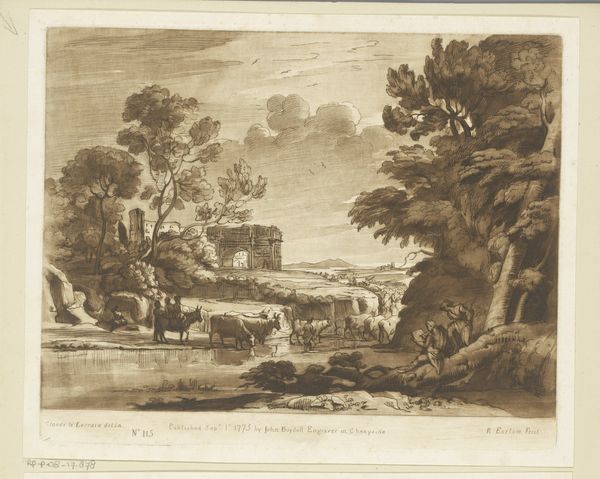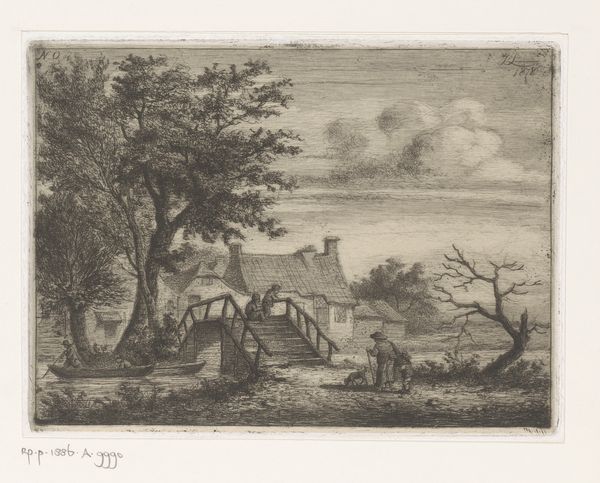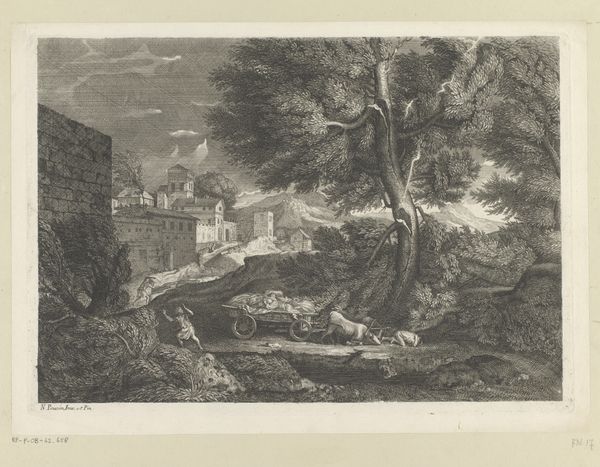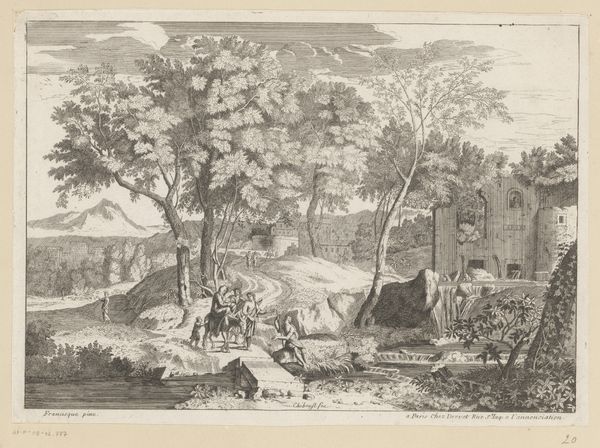
drawing, print, etching
#
drawing
#
narrative-art
#
dutch-golden-age
# print
#
pen sketch
#
etching
#
old engraving style
#
landscape
Copyright: National Gallery of Art: CC0 1.0
Curator: Looking at "Two Boats Approaching a Hut" by Allart van Everdingen, an etching dating back to somewhere between 1645 and 1656, the immediate impression is one of a serene, if slightly melancholic, atmosphere. It’s quite small, but dense with detail. Editor: Melancholic, yes, but also idyllic. There's a social narrative unfolding, even if subtly. Think about the societal structures that underpinned these scenes: trade, labour, class distinctions. The hut is placed centrally; it symbolizes home but also property, delineating space and power. The approaching boats suggest interactions—negotiations, exchanges—with those beyond the immediate domestic sphere. Curator: True. Van Everdingen was really influenced by his travels in Norway and Sweden, you can see that in the romanticized, somewhat rugged, depiction of nature here. But that's a constructed naturalism, wouldn't you say? What is his project by focusing on the common person's hut? Editor: Exactly. These Dutch Golden Age landscapes weren’t simply reflections of reality, but carefully curated representations infused with the values of the emerging bourgeois class. By depicting ordinary life—the labourer, the fisherman—artists like van Everdingen validated the virtues of diligence, industry, and a harmonious relationship with the land. Curator: The medium of etching itself—with its intricate lines and tonal subtleties—enabled the widespread dissemination of these images to an expanding consumer market. The print format democratizes the scene but is that real or an illusion? The choice to represent a simple dwelling reflects a broader cultural desire for national identity during this period. A subtle form of propaganda? Editor: I agree, thinking about those political undercurrents, consider the rise of Dutch maritime power in the 17th century and the East India Company. These scenes reinforced notions of Dutch enterprise, resourcefulness, and connection to international markets, creating a national brand in a way, even though it has strong class boundaries. Curator: The boats mirror those trading vessels, bringing home goods as well as capital. We see a snapshot of an idealized life sustained by forces the Dutch do not show. Thanks to Van Everdingen we are able to analyze all this. Editor: Precisely. Even in such a seemingly simple composition, history simmers just below the surface. A quick drawing style allows us to have endless conversations on context and influence.
Comments
No comments
Be the first to comment and join the conversation on the ultimate creative platform.



